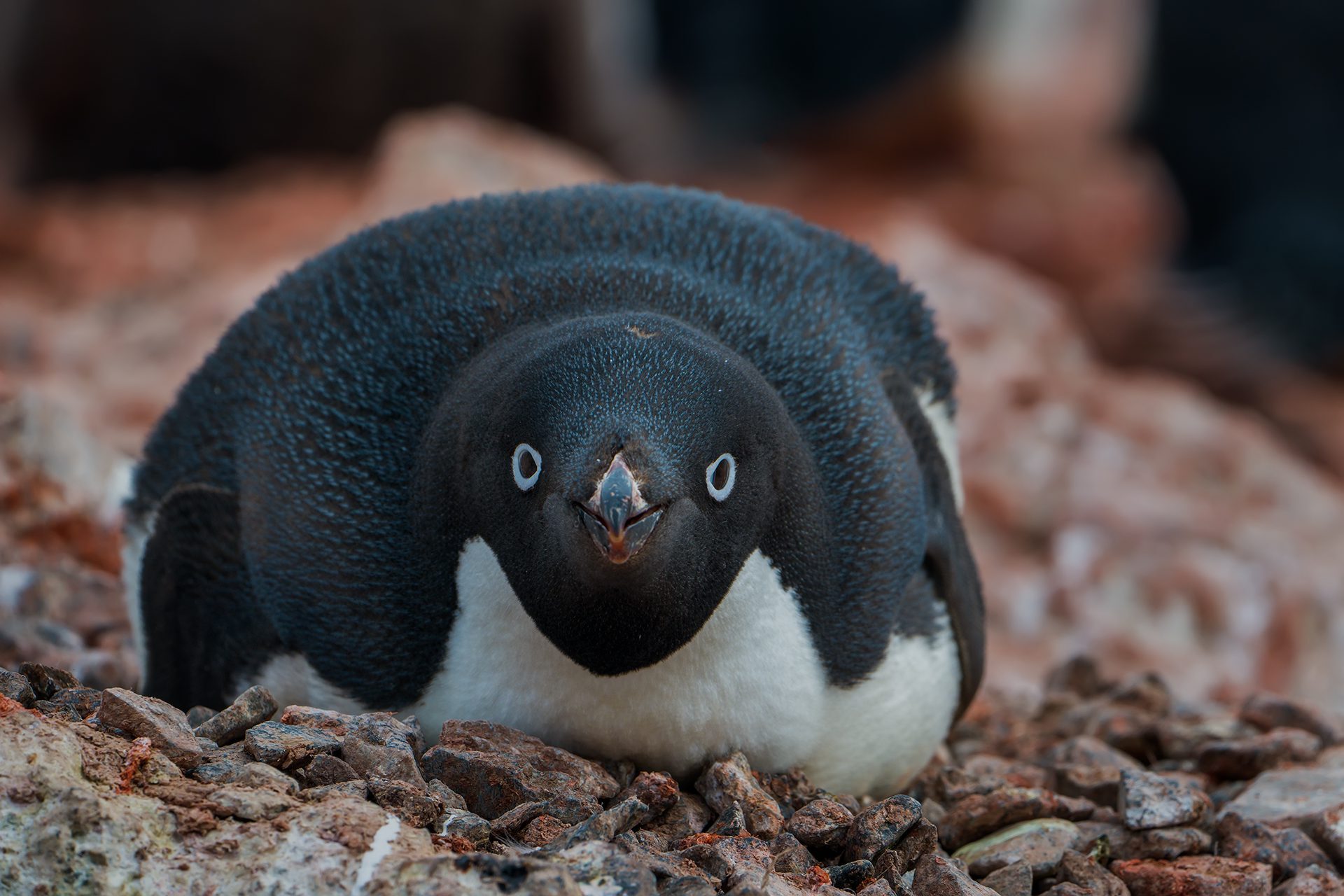
Haast's Eagle, once the world's largest eagle, soared through New Zealand's skies. This majestic bird, now extinct, was a true giant with a wingspan reaching up to 10 feet. Imagine a predator capable of taking down prey much larger than itself, including the massive moa birds. Haast's Eagle wasn't just big; it was a skilled hunter with powerful talons and keen eyesight. Its story is a fascinating glimpse into the past, showcasing nature's incredible diversity. Ready to dive into 37 intriguing facts about this awe-inspiring raptor? Let's spread our wings and explore the legacy of Haast's Eagle!
Key Takeaways:
- The Haast's Eagle was a massive and powerful predator, with a wingspan of 3 meters and talons as big as a tiger's claws. It hunted the now-extinct moa and lived in New Zealand's forests and mountains.
- Despite its extinction, the Haast's Eagle continues to inspire conservation efforts and scientific research. Its fossils are displayed in museums, and its story serves as a reminder of the importance of preserving biodiversity.
The Mighty Haast's Eagle
The Haast's Eagle, once the apex predator of New Zealand, is a fascinating bird of prey. Known for its massive size and hunting prowess, this eagle has captured the imagination of many. Let's dive into some intriguing facts about this incredible bird.
Size and Strength
Haast's Eagle was not just any bird; it was a giant among eagles. Its size and strength were unparalleled.
- Haast's Eagle had a wingspan of up to 3 meters (9.8 feet), making it one of the largest eagles ever.
- Weighing between 10 to 15 kilograms (22 to 33 pounds), it was twice as heavy as the largest living eagles today.
- Its talons were as large as a tiger's claws, measuring up to 9 centimeters (3.5 inches) in length.
- The powerful legs of Haast's Eagle could crush bones with ease, exerting a force of up to 500 pounds per square inch.
Habitat and Range
Understanding where Haast's Eagle lived helps us appreciate its role in the ecosystem.
- Haast's Eagle was native to the South Island of New Zealand.
- It primarily inhabited dense forests and mountainous regions, where it could easily ambush prey.
- The eagle's range was limited to New Zealand, making it an endemic species.
- Fossil evidence suggests that Haast's Eagle thrived in these habitats for thousands of years.
Diet and Hunting
Haast's Eagle was a formidable hunter, preying on some of the largest animals in its environment.
- Its primary prey was the moa, a large, flightless bird that could weigh up to 230 kilograms (510 pounds).
- Haast's Eagle used its powerful talons to strike and kill its prey, often targeting the neck or head.
- It could dive at speeds of up to 80 kilometers per hour (50 miles per hour) to catch unsuspecting prey.
- The eagle's keen eyesight allowed it to spot prey from great distances.
Extinction
Despite its dominance, Haast's Eagle eventually faced extinction. Several factors contributed to its demise.
- The arrival of humans in New Zealand around 1300 AD led to the rapid decline of the moa population.
- With its primary food source gone, Haast's Eagle struggled to find enough prey to survive.
- Habitat destruction by human activities further reduced the eagle's hunting grounds.
- By the 15th century, Haast's Eagle was extinct, leaving behind only fossils and legends.
Discovery and Research
The story of Haast's Eagle didn't end with its extinction. Modern science has uncovered much about this magnificent bird.
- The first Haast's Eagle fossils were discovered in the 1870s by Julius von Haast, a German geologist.
- Haast initially thought the bones belonged to a large eagle, but later research confirmed it was a distinct species.
- DNA analysis has shown that Haast's Eagle is closely related to the smaller little eagle of Australia.
- Ongoing research continues to reveal new insights into the life and behavior of Haast's Eagle.
Cultural Impact
Haast's Eagle has left a lasting impression on New Zealand's culture and folklore.
- The Maori, indigenous people of New Zealand, called the eagle "Pouakai" or "Hokioi."
- Legends describe the Pouakai as a giant bird capable of carrying off humans and livestock.
- Haast's Eagle features in many Maori myths and stories, often as a symbol of power and danger.
- Modern New Zealanders celebrate the eagle's legacy through art, literature, and conservation efforts.
Physical Characteristics
The physical traits of Haast's Eagle set it apart from other birds of prey.
- Haast's Eagle had a robust body, with strong muscles adapted for powerful flight and hunting.
- Its beak was large and hooked, perfect for tearing flesh from its prey.
- The eagle's feathers were dark brown, providing camouflage in the forested environment.
- Juvenile Haast's Eagles had lighter plumage, which darkened as they matured.
Reproduction and Lifespan
Understanding the reproductive habits and lifespan of Haast's Eagle provides a fuller picture of its life cycle.
- Haast's Eagles likely built large nests in tall trees or on cliff ledges.
- Females were larger than males, a common trait among birds of prey.
- The eagle's breeding season probably coincided with the availability of prey.
- Haast's Eagles may have lived up to 20 years in the wild.
Legacy and Conservation
Though Haast's Eagle is extinct, its legacy lives on through conservation efforts and scientific research.
- The eagle's fossils are displayed in museums around the world, educating people about this incredible bird.
- Conservationists use the story of Haast's Eagle to highlight the importance of protecting endangered species.
- Haast's Eagle has inspired numerous documentaries, books, and articles, keeping its memory alive.
- Scientists continue to study Haast's Eagle to learn more about its role in New Zealand's ecosystem.
- The eagle's story serves as a reminder of the impact humans can have on the environment and the importance of preserving biodiversity.
The Legacy of Haast's Eagle
Haast's Eagle, a true marvel of nature, continues to fascinate us. This giant bird, once soaring the skies of New Zealand, was the largest eagle ever known. Its impressive wingspan and powerful talons made it a top predator. Sadly, it went extinct around 1400 AD, likely due to the decline of its primary prey, the moa, and human activities.
Despite its extinction, Haast's Eagle leaves behind a legacy that helps scientists understand prehistoric ecosystems. Fossils and studies offer insights into its hunting techniques, diet, and behavior. This bird's story reminds us of the delicate balance in nature and the impact humans can have on wildlife.
Learning about Haast's Eagle not only satisfies our curiosity but also emphasizes the importance of conservation. By protecting today's endangered species, we honor the memory of incredible creatures like Haast's Eagle and ensure a diverse future for our planet.
Frequently Asked Questions
Was this page helpful?
Our commitment to delivering trustworthy and engaging content is at the heart of what we do. Each fact on our site is contributed by real users like you, bringing a wealth of diverse insights and information. To ensure the highest standards of accuracy and reliability, our dedicated editors meticulously review each submission. This process guarantees that the facts we share are not only fascinating but also credible. Trust in our commitment to quality and authenticity as you explore and learn with us.


